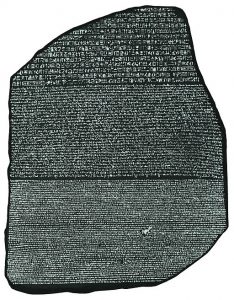
Data Science is all about building good models, so let us start by building a very simple model: we want to predict monthly income from age (in a later post we will see that age is indeed a good predictor for income).
Continue reading “Learning Data Science: Modelling Basics”
Category: R-Bloggers
Posts that are contributed to R-Bloggers
Hash Me If You Can
 We are living in the era of Big Data but the problem of course is that the bigger our data sets become the slower even simple search operations get. I will now show you a trick that is the next best thing to magic: building a search function that practically doesn’t slow down even for large data sets… in base R!
We are living in the era of Big Data but the problem of course is that the bigger our data sets become the slower even simple search operations get. I will now show you a trick that is the next best thing to magic: building a search function that practically doesn’t slow down even for large data sets… in base R!
Continue reading “Hash Me If You Can”
If wealth had anything to do with intelligence…
 …the richest man on earth would have a fortune of no more than $43,000! If you don’t believe me read this post!
…the richest man on earth would have a fortune of no more than $43,000! If you don’t believe me read this post!
Continue reading “If wealth had anything to do with intelligence…”
Understanding the Magic of Neural Networks

Everything “neural” is (again) the latest craze in machine learning and artificial intelligence. Now what is the magic of artificial neural networks (ANNs)?
Continue reading “Understanding the Magic of Neural Networks”
Understanding the Maths of Computed Tomography (CT) scans

Noseman is having a headache and as an old-school hypochondriac he goes to see his doctor. His doctor is quite worried and makes an appointment with a radiologist for Noseman to get a CT scan.
Continue reading “Understanding the Maths of Computed Tomography (CT) scans”
Check Machin-like Formulae with Arbitrary-Precision Arithmetic
Happy New Year to all of you! Let us start the year with something for your inner maths nerd 🙂

Continue reading “Check Machin-like Formulae with Arbitrary-Precision Arithmetic”
Clustering the Bible

During this time of year, there is obviously a lot of talk about the Bible. As most people know the New Testament comprises four different Gospels written by anonymous authors 40 to 70 years after Jesus’ supposed crucifixion.
Unfortunately, we have lost all of the originals but only retained copies of copies of copies (and so on) which date back hundreds of years after they were written in all kinds of different versions (renowned Biblical scholar Professor Bart Ehrmann states that there are more versions of the New Testament than there are words in the New Testament). Just as a fun fact: there are many more Gospels but only those four were included in the “official” Bible.
Continue reading “Clustering the Bible”
Your AI journey… and Happy Holidays!

I want to draw your attention to a very valuable (and short!) whitepaper from my colleague, Professor Andrew Ng, where he shares important insights on how to lead companies into the AI era.
Continue reading “Your AI journey… and Happy Holidays!”
Learning R: A Gentle Introduction to Higher-Order Functions

Have you ever thought about why the definition of a function in R is different from many other programming languages? The part that causes the biggest difficulties (especially for beginners of R) is that you state the name of the function at the beginning and use the assignment operator – as if functions were like any other data type, like vectors, matrices or data frames…
Continue reading “Learning R: A Gentle Introduction to Higher-Order Functions”
Intuition for Principal Component Analysis (PCA)

Principal Component Analysis (PCA) is a dimension-reduction method that can be used to reduce a large set of (often correlated) variables into a smaller set of (uncorrelated) variables, called principal components, which still contain most of the information.
PCA is a concept that is traditionally hard to grasp so instead of giving you the n’th mathematical derivation I will provide you with some intuition.
Continue reading “Intuition for Principal Component Analysis (PCA)”
